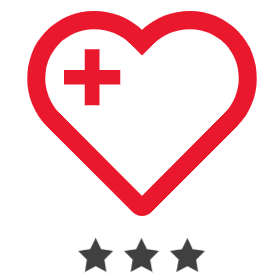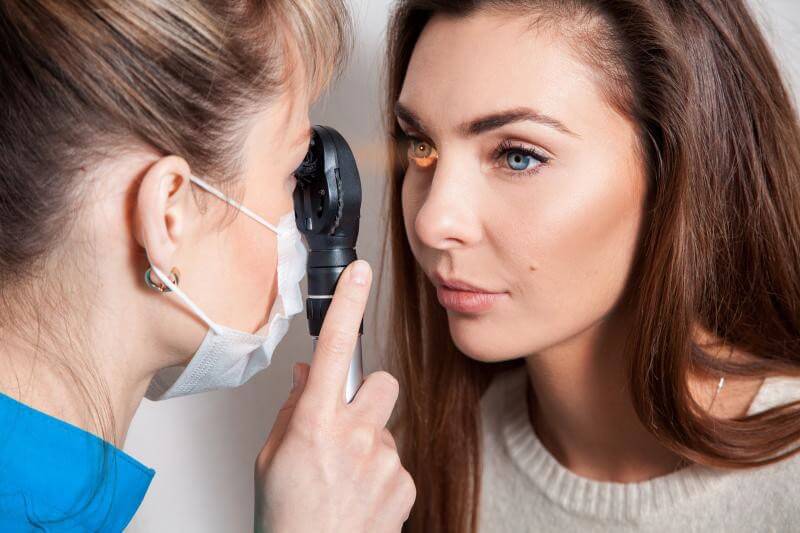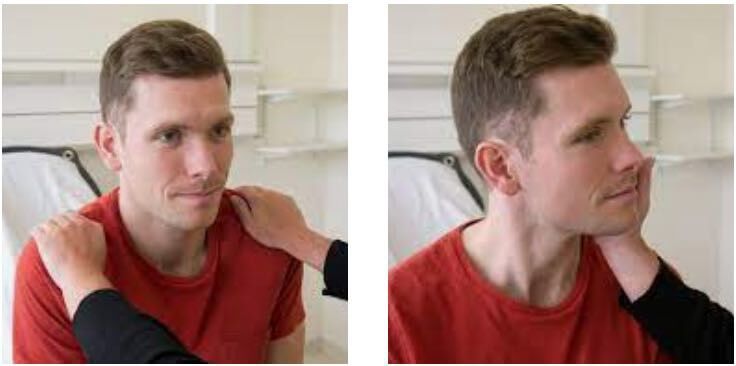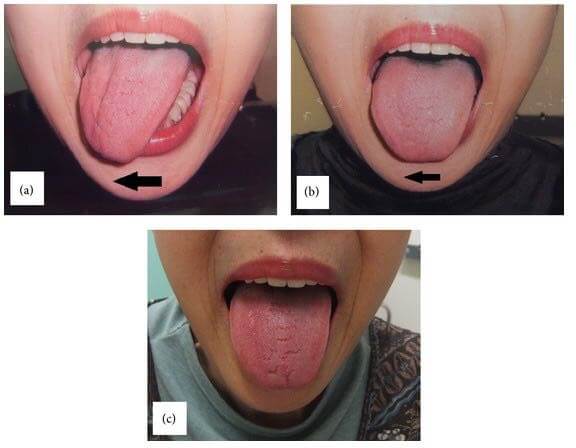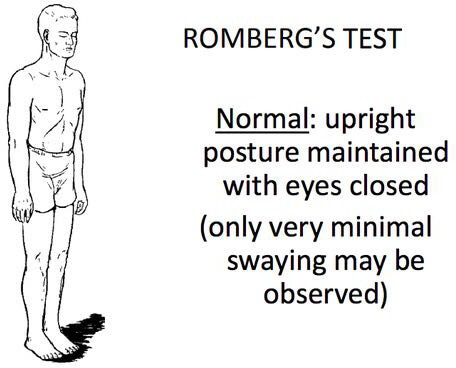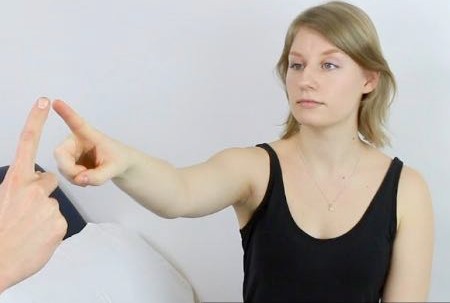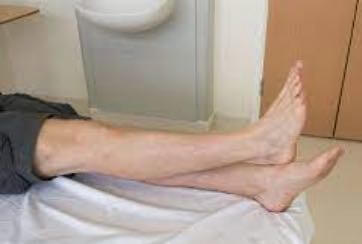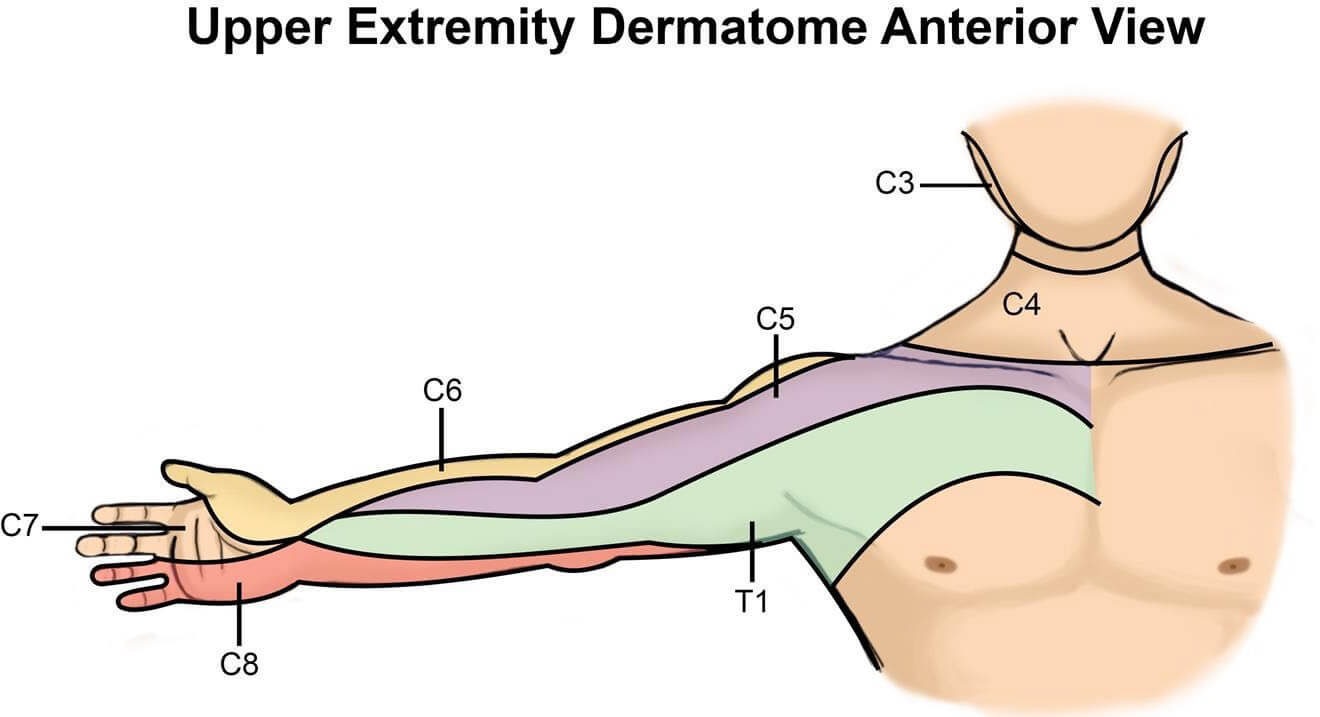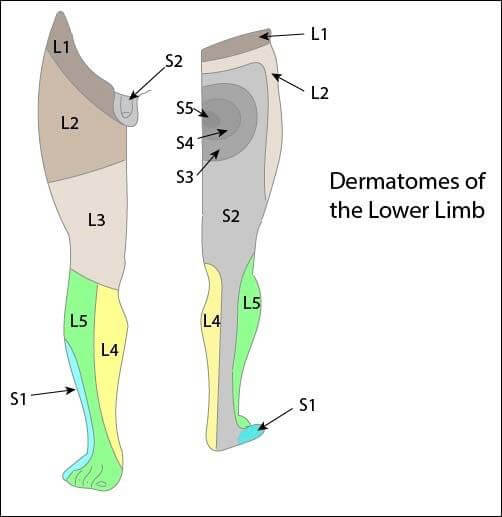Table of Contents
THE NEUROLOGICAL EXAMINATIONS
Full Cranial Nerve Examination:
- General Inspection:
- Altered Level of Consciousness?
- Patient Alert? Oriented to Person Place & Time?
- Facial Asymmetry?
- Evidence of Trauma?
- Fasciculations/Tremors?
- Muscle Wasting?
- Speech Impediments (Dysphasia?/Dysarthria?/Dysphonia)
- Ptosis?
- Inability to Close the Eye?
- Facial Muscle Wasting?
- Facial Sweating?
- I – Olfactory:
- “Have you noticed any change in smell or taste lately?”
- II – Optic:
- “Have you noticed any changes in your vision lately?”
- Obtain Corrected Visual Acuity in Each Eye Separately, then both eyes. (Snellen’s Chart)
- Assess for Colour Blindness (Ishihara Charts)
- 6 Point Visual Field Testing (confrontation position. Use hat pin and cover ipsilateral eyes)
- Pupil Response to Light (Direct & Consensual + Swinging Torch Test)
- Fundoscopy (Cataracts/Diabetic Retinopathy/Hypertensive Retinopathy)

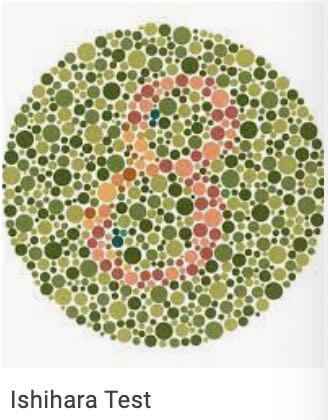
- III – Occulomotor, IV – Trochlear & VI – Abducens:
- “Keeping your head still, follow this hat pin with your eyes”
- “Let me know if at any time you begin to see double”
- Do the 6-speed gearbox positions
- Asymmetrical Movement of the Eyes
- Nystagmus (NB: This is a sign of Cerebellar Pathology – and always points to the side of the lesion)
- Occulomotor: Superior Rectus, Medial Rectus, Inferior Rectus, Inferior Oblique
- Trochlear: Superior Oblique
- Abducens: Lateral Rectus
- V – Trigeminal:
- “I’m going to be testing your facial sensation now using a sensory pin”
- “First I’m going to test your “Sharp” (Pain) sensation, and this is what it feels like (on sternum)”
- Pain: Ophthalmic Division, Maxillary Division, Mandibular Division
- “next i’m going to test your “light touch” sensation, and this is what it feels like (on sternum)”
- Light Touch (Cotton Wool): Ophthalmic Division, Maxillary Division, Mandibular Division.
- “Ok now look straight ahead with your eyes wide open thankyou”
- Corneal Reflex (Cotton wool): touch rolled cotton wool onto the corneas from the sides
- “Next I’m going to test the motor function of the trigeminal nerve”
- “Clench your jaw please” ➔ Feel the Masseter Muscle
- “Open your jaw and resist me closing it” ➔ Pterygoids
- “Just open your jaw halfway and relax, and I’m going to tap it with this” ➔ Jaw jerk reflex

- VII – Facial Nerve:
- “Wrinkle your forehead and don’t let me flatten it”
- “Close your eyes and don’t let me open them”
- “Smile”
- “Puff out your cheeks and don’t let me squash them”
- (NB: UMN Lesions – you lose the Lower Quadrant of the face on the Contralateral Side)
- (NB: LMN Lesions – you lose the Whole Half of the face on the Ipsilateral Side)

- VIII – Vestibulocochlear Nerve:
- “Next I’m going to test your hearing and balance”
- Romberg’s Test (“Stand feet together and close your eyes”)
- Weber’s Test (“Tell me if you hear the sound more in one ear, or is it equal in both?”) – Comment on lateralisation. If it lateralises to one ear, then there is CONDUCTIVE DEAFNESS in that ear.
- Rinne’s Test (“Tell me when you cannot hear the sound any more”) – then move the blades close to the ear canal – “Can you hear it now?”
- Whisper Test (“No repeat what I whisper” – 69, 100) Whilst distracting the other ear with rubbing fingers.
- IX – Glossopharyngeal & X – Vagus:
- “Open your mouth and say AH”
- Look for asymmetrical elevation of the Uvula.
- Mention that you’d also do the gag reflex.
- “Can you say your name please” – Assess for Hoarseness
- “Can you cough please” – Assess for bovine cough.
- “Open your mouth and say AH”
- XI – Accessory Nerve:
- “Turn your head to the side and resist me moving it” (Contralateral Sternocleidomastoids)
- “Shrug your shoulders and resist me pushing them down” (Trapezius)
- XII – Hypoglossal:
- “Poke your tonge out as far as you can”
- Assess for Asymmetry (The tongue will point to the side of the lesion)
“Thankyou that concludes my examination”
Focussed Cerebellar Examination:
- Introduction + Wash Hands + Consent
- General Inspection:
- Patient Alert & Orientated?
- Tremor? Fasciculations
- Wasting?
- Evidence of Head Injury?
- Speech:
- Say “British Constitution” (Listen for Dysphasia, Dysarthria, Dysphonia)
- Horizontal Nystagmus:
- Oscillations of the eyeball when looking from one side to the other.
- NB: Nystagmus always points to the side of the cerebellar lesion.
- Standing Coordination:
- Romberg’s Test – “Stand with feet together and close your eyes for me” – SUPPORT THE PATIENT:
- Loss of balance with eyes closed = Proprioceptive Dysfunction (Dorsal Column)
- Loss of balance with eyes open = Cerebellar Dysfunction
- Romberg’s Test – “Stand with feet together and close your eyes for me” – SUPPORT THE PATIENT:
-
- GAIT:
- Walk Normally (Note any wide-based gait = Cerebellar Dysfunction)
- Heel to toe Walking:
- Inability to do this = Cerebellar Dysfunction
- Pronator Drift – “Can you open your palms, raise your arms out to the front and close your eyes”:
- Upward Drift = Cerebellar Dysfunction
- Downward Drift = Pyramidal
- Rebound – “Can you raise your arms out to the front as quick as you can and then stop them”:
- Rebound = Cerebellar Dysfunction
- Disdiodochokinesis:
- “Clap your hands like this as fast as you can”
- Finger nose Test (Past Pointing):
- Touch your nose
- Touch my finger
- GAIT:
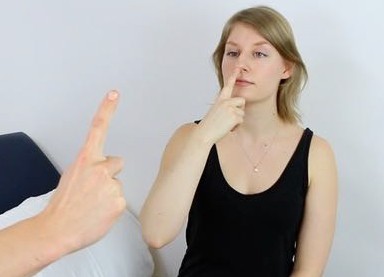
- Supine Coordination:
- Heel-Shin Test:
- “Place your heel on your knee and slide it down your shin…then lift off…then back to knee & repeat.”
- Finger Toe Test (Past Pointing):
- Touch My finger
- Tough the bed
- Etc.
- Disdiodochokinesis:
- “Tap my hands with your feet alternating as fast as you can.”
- Clonus:
- Flex the knee, externally rotate the hip, and Rapidly Dorsiflex (Sustained Rhythmic Contraction = Clonus = Cerebellar Dysfunction)
- Heel-Shin Test:
- Truncal Ataxia:
- “Have a seat…Cross your arms…now stand up without using your hands”
“Thankyou that concludes my examination”
Focussed Upper Limb Neurological Examination:
- Introduction, Wash Hands, Consent,
- General Inspection:
- “Can you please take your shirt off”
- “Patient appears alert and oriented, and in no apparent pain or distress”
- Wasting (LMN Lesion)?
- Tremors (Parkinsons/Benign)? Fasciculations (LMN Lesion)?
- Scars? Deformities?
- Bruising? Injury?
- Asymmetry?
- “Are you left or right handed?”
- Vital Signs
- Motor Function:
- Muscle Bulk/Wasting of:
- Intrinsic Hand Muscles
- Forearm
- Biceps/Triceps
- Shoulders
- Tone – Hyertonia (UMN Lesion), Hypotonia (LMN Lesion), Cogwh./Leadpipe Rigidity (Parkinson’s):
- Shoulder Abduction/Adduction
- Shoulder Flextion/Extension
- Elbow Flexion/Extension
- Supination/Pronation
- Wrist Flexion/Extension
- Finger Flexion/Extension
- Power – Graded 0➔5 (0=None; 1=Flicker; 2=Gravity Limited; 3=Gravity Unlimited; 4=Fatigue; 5=Full)
- Shoulder Abduction (C5, C6) “Pick up sticks”
- Shoulder Adduction (C7, C8) “Lay them straight”
- Elbow Flexion (C5, C6) “Pick up sticks”
- Elbow Extension (C7, C8) “lay them straight”
- Wrist Flexion (C6, C7) “Point to heaven”
- Wrist Extension (C7, C8) “lay them straight”
- Grip Strength (C7, C8) “masterbate”
- Finger Adduction & Abduction (C8, T1)
- Thumb Opposition (C8, T1)
- Reflexes – Hyperreflexia (UMN Lesion); Hyporeflexia (LMN Lesion):
- Triceps Reflex (C6, C7)
- Biceps Reflex (C5, C6)
- Brachioradialis (C5, C6)
- Coordination/Cerebellar Function:
- Pronator Drift – “Can you open your palms, raise your arms out to the front and close your eyes” (Downward = Pyramidal; Upward = Cerebellar)
- Rebound – “Keep your hands there & your eyes closed, and don’t let me move your arms” OR “Quickly raise your arms to the front and stop”.
- Disdiodochokinesis – “Clap your hands like this as fast as you can”
- Past-Pointing (Cerebellar Dysfunction) – “Touch your nose, Touch my finger”
- Muscle Bulk/Wasting of:
- Sensory Function – (Standardise on Sternum first):
-
-
- OVER ALL DERMATOMES:
- C3 (Corporals Patch)
- C4 (Corporals Patch)
- C5 (Biceps)
- C6 (Thumb)
- C7 (Middle Finger)
- C8 (Pinky)
- T1 (Medial Forearm)
- T2 (Medial Bicep)
- OVER ALL DERMATOMES:
-
-
-
- 1. Pain (Spinothalamic)
- EYES CLOSED
- (Temperature – Not done)
- 2. Vibration (Dorsal Column)
- Start Distally ➔ Move Proximally
- 3. Proprioception (Dorsal Column)
- EYES CLOSED
- 4. Light Touch (Both Pathways)
- EYES CLOSED
- 1. Pain (Spinothalamic)
“Thankyou that concludes my examination”
Focussed Lower Limb Neurological Examination:
- Introduction, Wash Hands, Consent,
- General Inspection:
- Standing:
- Muscle Wasting? (LMN)
- Fasciculations? (LMN)
- Scars? Deformities?
- Injury?
- Involuntary Movements?
- GAIT – “Can you walk to the other end of the room, turn round, and walk back”. Look for:
- Foot Drop L4 + L5 Lesion (Common Peroneal/Fibular Nerve Palsy)
- Cannot Walk on Toes S1 Lesion.
- Shuffling Gait (Parkinsons)
- Wide Based Gait (Cerebellar)
- Poor Heel-Toe Walking (Cerebellar)
- Romberg’s Test – “Stand with feet together and close your eyes for me” – SUPPORT THE PATIENT:
- Loss of balance with eyes closed = Proprioceptive Dysfunction (Dorsal Column)
- Loss of balance with eyes open = Cerebellar Dysfunction
- Standing:
- Motor Function – On Examination Couch:
- Muscle Bulk:
- Feel for any wasting (LMN Lesion)
- Tone – (Hypertonia = UMN Lesion; Hypotonia = LMN Lesion; Cog/Leadpipe Rigidity = Parkinson’s):
- Hip Flexion
- Knee Flexion & Extension
- Ankle Flexion & Extension
- Toe Flexion & Extension
- Power:
- Hip Flexion (L2, 3, 4) “Enforce the Law” (With Roundhouse Kick)
- Hip Adduction (L2, 3, 4) “Enforce the Law” (With Roundhouse Kick)
- Hip Abduction (L2, 3, 4) “Enforce the Law” (With Roundhouse Kick)
- Hip Extension (L5, S1) + (S2) “Tense your bum”
- Knee Extension (L3, L4) “Kick the Ball”
- Knee Flexion (L5, S1) “Kick your bum”
- Dorsiflexion (L4, L5) “Walk on Fire”
- Plantar Flexion (S1) “Find your son”
- Reflexes:
- Patellar Tendon (L3, L4) “Kick the Ball”
- Archilles Tendon (S1) “Find your son”
- Plantar Reflex/(Babinski’s Positive if UMN Lesion)
- Coordination/Cerebellar Function:
- Disdiodocokinesis:
- “Tap your feet against my hands as quickly as possible”
- Finger-Toe Test (Past Pointing Test):
- “touch my finger, touch the bed, touch my finger”
- Heel-Shin Test:
- Place your heel on your knee and slide it down your shin, lift off, and place back on knee…Repeat.
- + Test for CLONUS (Cerebellar Dysfunction)
- Disdiodocokinesis:
- Muscle Bulk:
- Sensation:
- OVER ALL DERMATOMES – With EYES CLOSED:
- L1 Garter Band 1
- L2 Garter Band 2
- L3 Anterior Knee
- L4 Medial Calf
- L5 Lateral Calf
- S1 Lateral Foot (little toe)
- S2 Posterior Thigh
- OVER ALL DERMATOMES – With EYES CLOSED:
-
- Pain
- Vibration
- Proprioception
- Light Touch
- Special tests for Meningitis:
- Kernig’s Sign – Neck pain on hip flexion & knee extension
- Brudzinski’s Sign – Involuntary Hip Flexion & knee Extension on Neck Flexion
- Neck Stiffness – Pain on Neck Flexion
“Thankyou that concludes my examination”
Happy Learning!!
